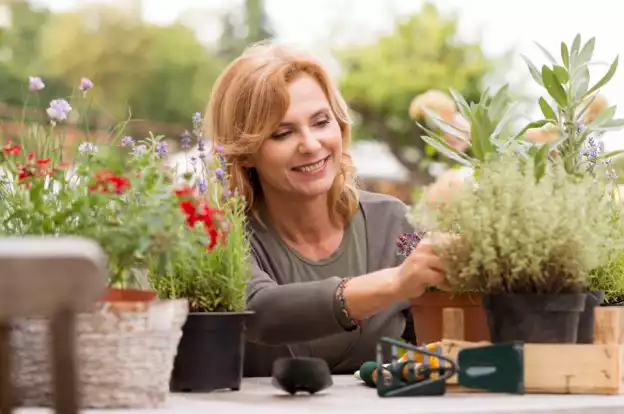Healthy Gardening Tips for Spring
2 minute read
Listen to the Healthy Gardening Tips for Spring article by clicking the play button above.
Are you looking for new garden tips for this Spring?
With a new spring underway, we want to keep you on the right gardening path so you can enjoy all the beautiful colors, sights, and smells of fresh produce and blooming flowers. But keep in mind that all those plants can bring unwanted pests and increased pollen.
Read below to discover some natural and preventative ways of repelling pests, and see how to enjoy a garden without a high pollen count.
Preventing Garden Pests
- Start with healthy soil for healthy plants that are more resilient against pests
- Choose resistant varieties that naturally repel pests
- Attract insects and birds that will benefit your garden and prey on the pests by planting flowers that will meet their needs
- Planting aromatic herbs like garlic, mint, coriander, yarrow, or lemongrass among or near plants can deter pests. Some of them also help attract the predators that control your pest population
- Confuse pests by interplanting, or alternating specific crops, herbs, and flowers
- Floating row covers can keep pests away from young plants until they’re established while still allowing water and light to reach them
- Don’t scare away ALL the pests. Having a few pests can actually benefit your garden by keeping those beneficial insects and birds around
- If your “few pests” turns into an outbreak, resist the urge to use pesticides, no matter how organic. Instead, remove the infested plant to stop any spreading
Managing Pollen Counts
- Choose the right plants if you’re looking to add to your landscape:
- Flowering plants are typically pollinated by insects instead of wind, so pick plants with bright, fragrant flowers whose pollen is too big to get in the air
- Native plants are easier to grow compared to non-native plants that are more likely to struggle and therefore release more pollen under distress
- Go for female trees—often labeled seedless or fruitless—because most pollen comes from male trees
- Safe choices of trees include apple, dogwood, pear, plum, or magnolia. Safe shrubs include hydrangea, azalea, rhododendron, or boxwood. Safe flowers include daffodils, sunflowers, roses, daisies, or tulips
- If your yard already contains high-pollen plants or trees, consider having them removed entirely or relocated away from any doors or windows to prevent the pollen from getting inside your home
- Timing is everything when it comes to pollen counts. Early morning and evening hours are most suitable for gardening when you suffer from allergies
- Weather also plays a key role. Pollen counts are lower on cool, cloudy, or damp days so check the forecast before heading outside
- Trim your lawn often to keep it around two inches, which will inhibit seeds. Depending on how sensitive you are to pollen, you might need to ask a friend or family member to mow for you
- Wear lightweight clothing to keep your arms and legs covered, and wear pollen masks, gardening gloves, and a hat and sunglasses to protect yourself from flying pollen
- After completing your yard work for the day, leave any shoes or gloves outside and shower as soon as possible since your clothing and hair can all carry allergens into your home
